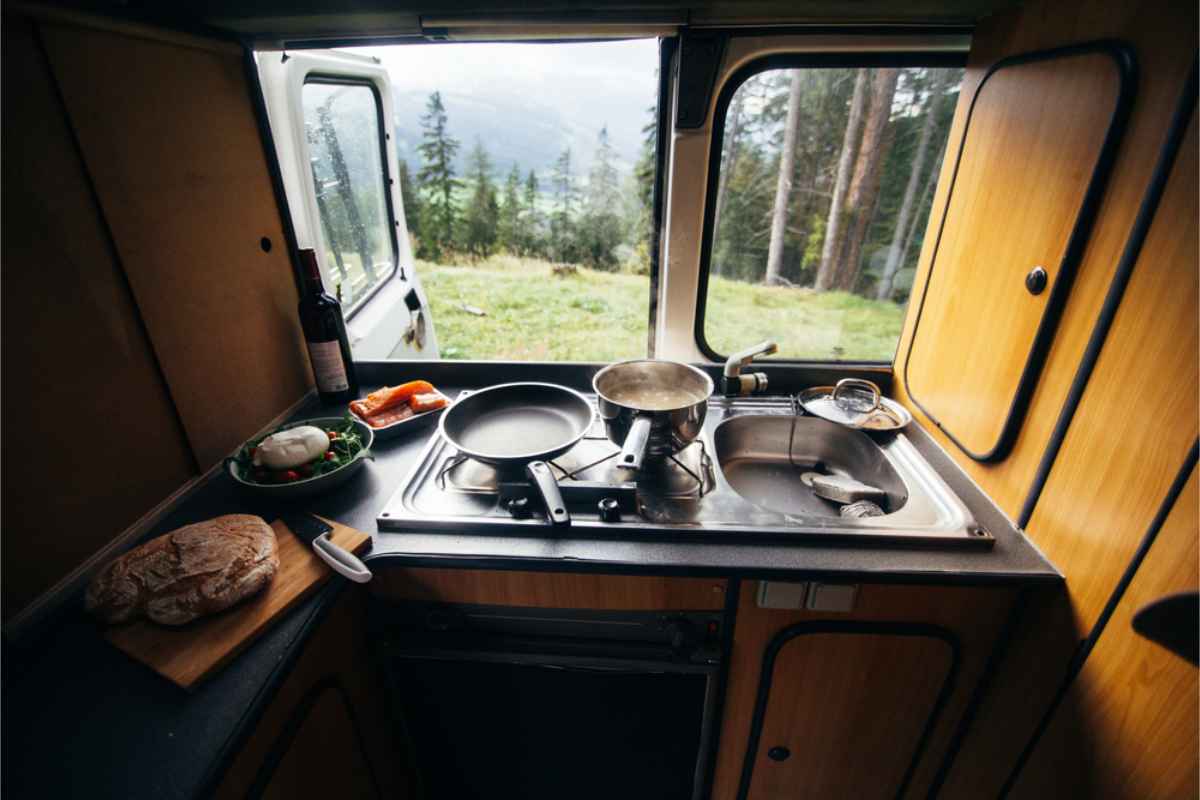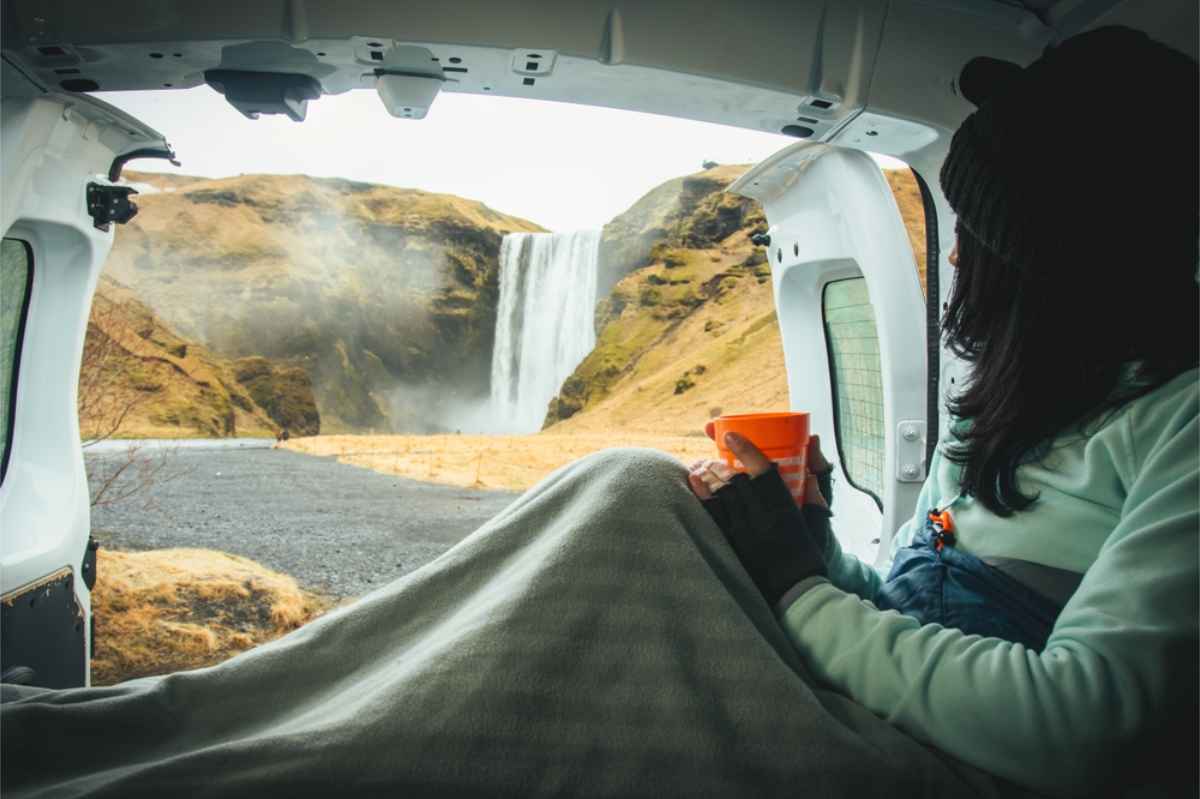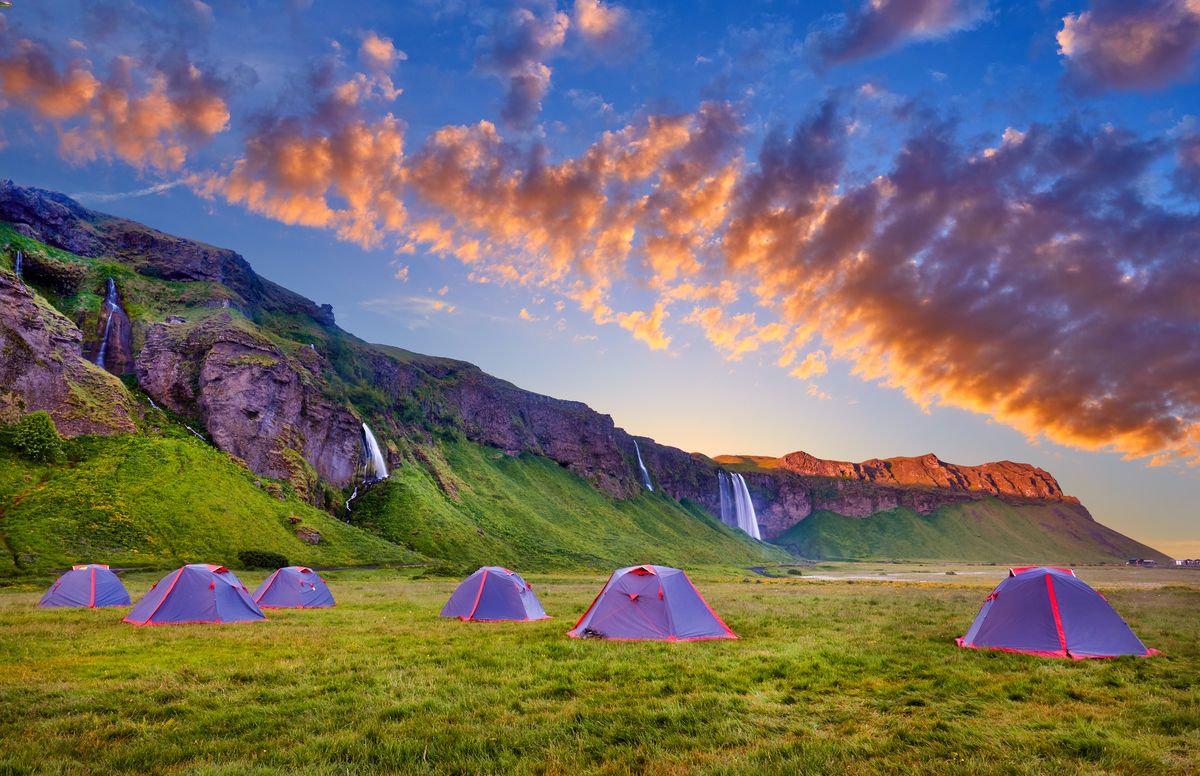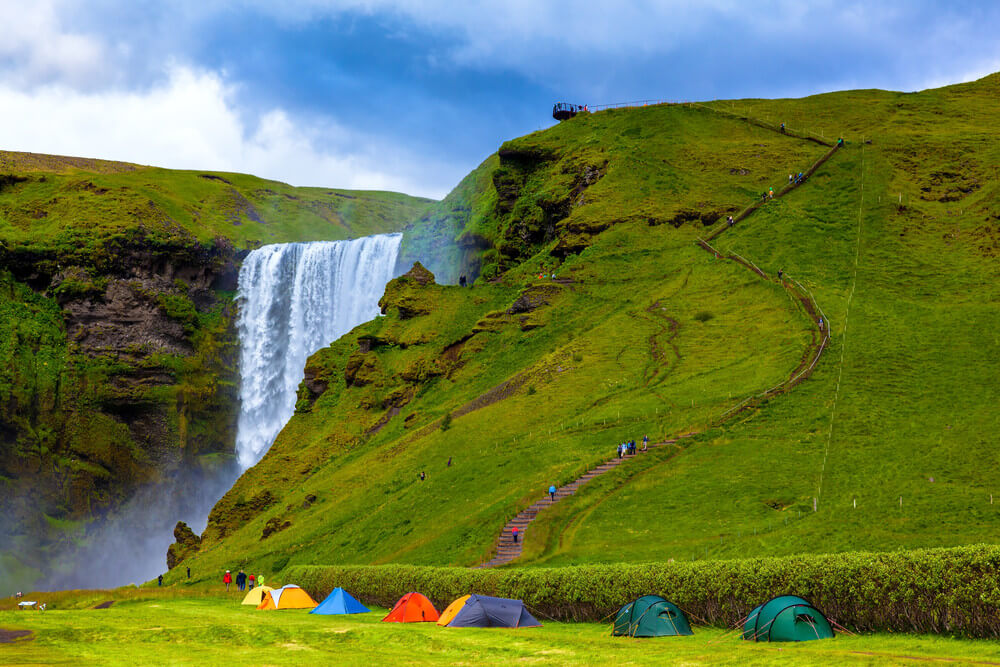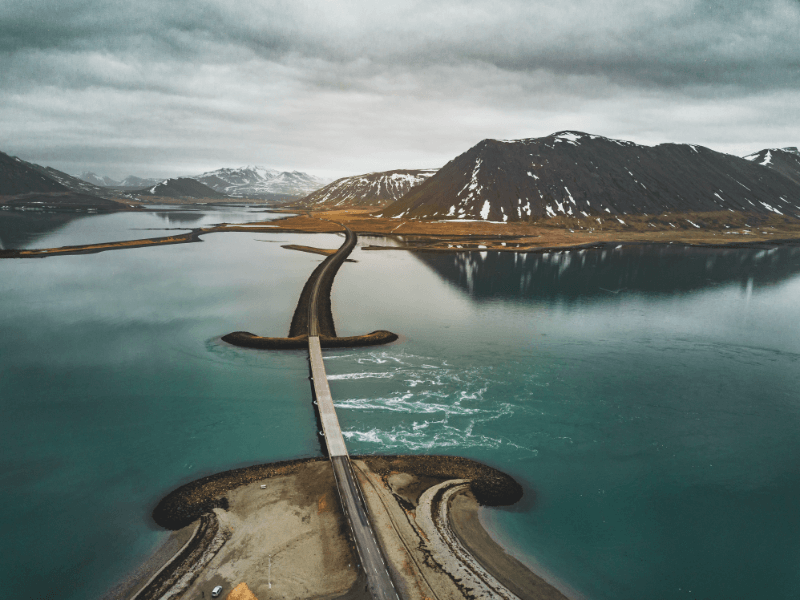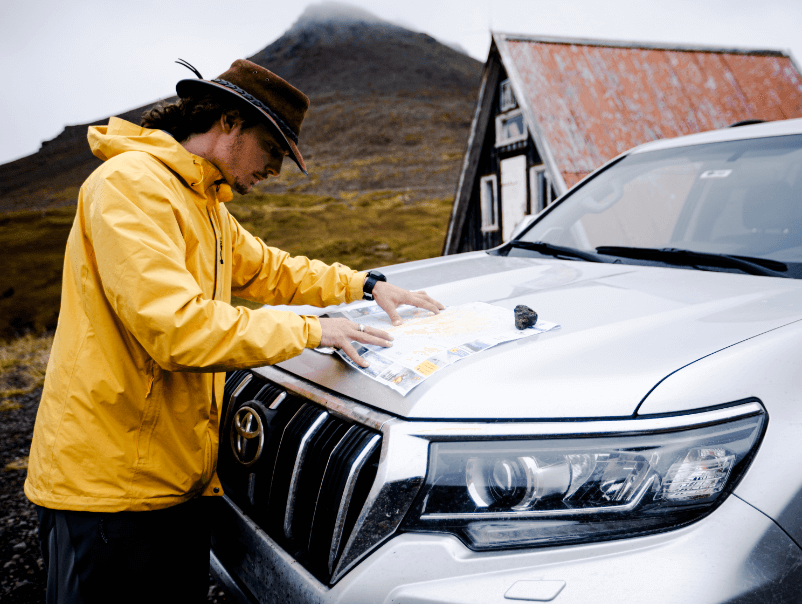So, you’ve made the decision to travel in Iceland in a campervan. As you prepare for your campervan adventure, you are likely thinking about how you will feed yourself without access to a full kitchen, including a refrigerator. These non-refrigerated meals and ideas for snacks and food will help you determine what to look for on your grocery shopping trips in Iceland.
Why Non-Refrigerated Meals Are a Must for Campervan Travel in Iceland
Many campervans aren’t equipped with a refrigerator or may have limited space, making it essential to buy food that doesn’t need to be refrigerated. Making no-refrigeration meals while you camp is one of the best ways to reduce your spending during your Iceland trip. You can easily stock up at the beginning of your trip and eliminate or reduce your need to spend valuable time grocery shopping.
Campervan Challenges in Iceland: Weather, Roads & Resources
One of the biggest challenges of choosing a campervan for your Iceland vacation is the weather and driving conditions you may face. This is especially a problem if you travel in the winter months. It’s essential to follow the weather and road conditions closely and be prepared to make changes to your itinerary to accommodate these issues.
In addition, you may face limited facilities, depending on the time of year you travel and where you go within the country. Campgrounds are widely available through the summer months, but the facilities available at each one will vary. If you intend to save more money cooking meals for camping with no fridge, you will have to make a list of non-perishable camping food.
If you are heading into the highlands, you won’t encounter many resources. The F-roads are rough, unmaintained roads with no gas stations or grocery stores along the way. You will need to stock up well before you start this part of your trip.
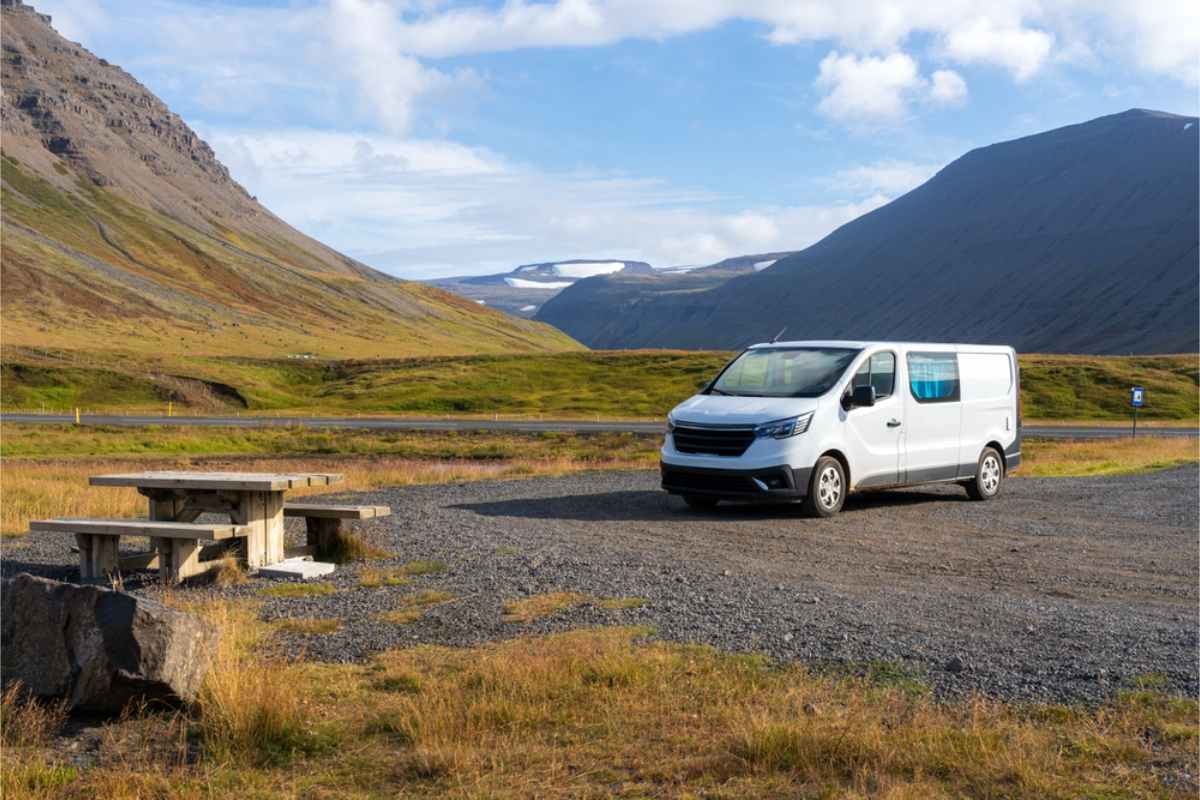
Why Relying on a Fridge Is Risky in Iceland Campervans
When traveling in a campervan in Iceland, relying on refrigeration often isn’t feasible. Unlike refrigerators found in hotels and homes, campervan fridges tend to be smaller and may not be as effective in keeping food chilled to the proper temperature. If you have it packed too full, it can also negatively impact its efficiency.
For this reason, it’s best to rely on no-refrigeration camping meals and foods that last a long time without refrigeration for your snacks. Being able to cook camping foods with no fridge will ensure you can eat well without worrying about your food spoiling or having to stop at the grocery store every day, wasting valuable sightseeing time.
Benefits of Shelf-Stable Camping Food (Save Time & Money!)
Choosing shelf-stable foods for camping is the best way to reduce your food bills on your trip and keep your food fresh for longer. You won’t have to worry about whether your campervan has a refrigerator or if you can find a cooler and ice to use throughout your journey. You can simply make shelf-stable camping meals instead.
In addition, you can easily use your first day to purchase all your non-refrigerated food while you overcome your jet lag and then be ready to get on the road the next day. You also won’t have to worry about locating nearby grocery stores along your route and spending your valuable time browsing store aisles rather than waterfalls and other popular sights.
If you have too much food at the end of your trip, many camper companies and some campgrounds have shelves where you can leave your unused food to help other campers cook camping meals with no refrigeration required.

How to Store and Pack Non-Perishable Foods in a Campervan
While it’s convenient to stock up on easy camping meals with no fridge, you will need to figure out how to store your non-perishable meals. At the start of your journey, you will need to find space for your luggage along with enough food for your trip, all with the limited space of a campervan. You certainly don’t want your food rolling around loose while driving.
Choosing the Right Storage Containers
First and foremost, you won’t have a lot of extra room in your campervan, especially once you store your luggage. Choose containers that are small and stackable while still providing enough space to hold various food packages. Clear plastic containers are often preferred so you can easily see what’s inside without opening them each time. They are also durable and stable.
Another option for storage containers is collapsible silicon containers. These containers aren’t see-through, but when you aren’t using them, you can collapse them into a smaller size and save space.
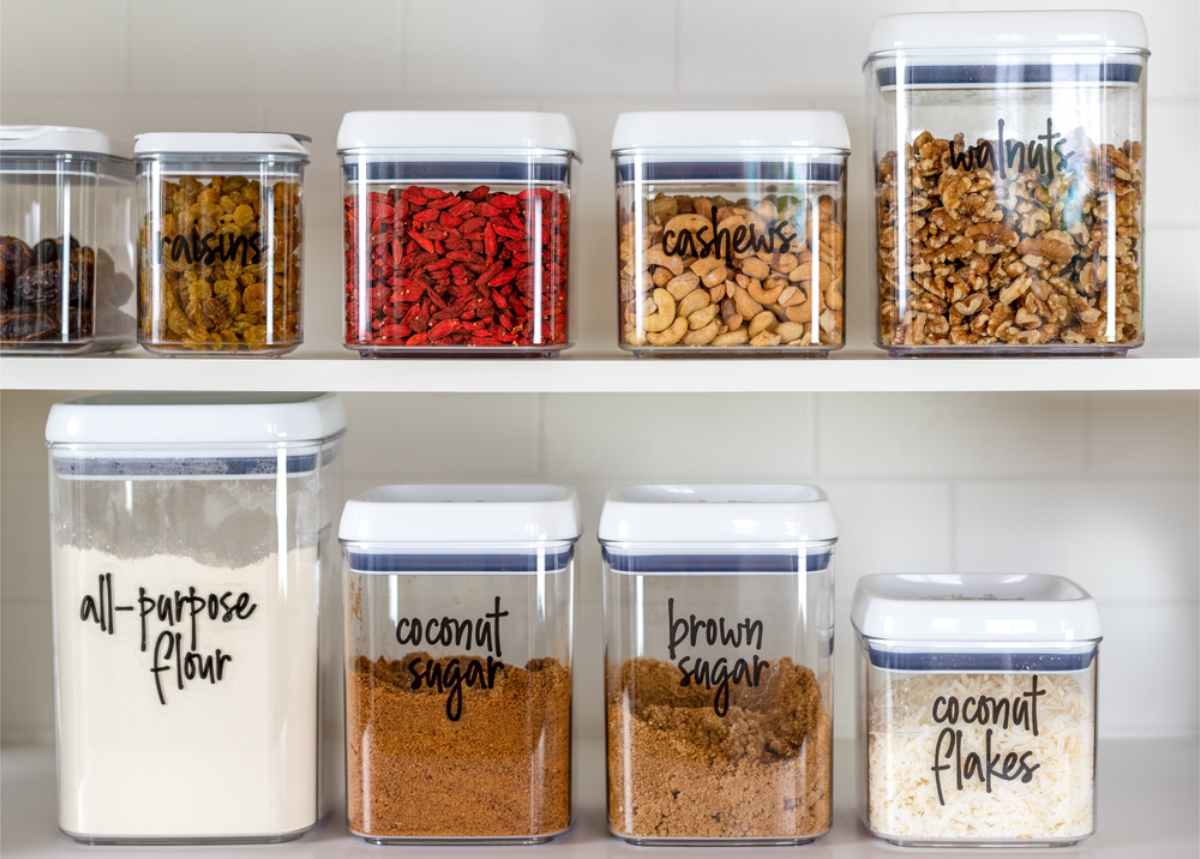
Condensation Tips to Keep Food Dry in Iceland’s Humid Climate
Humidity can be a concern in a campervan. Your warm breath and body coming in contact with chilled surfaces or the cold air can quickly create a condensation problem inside your campervan. The air can also be cold and damp, leaving condensation when the sun comes up in the morning.
To manage moisture and condensation to keep your non-perishable food for camping in good condition, choose containers with an airtight seal. You should also avoid storing shelf-stable food for camping on the floor or against outside walls. When preparing no-fridge camping meals, crack the windows to avoid condensation build-up during the cooking process.
Some visitors bring or buy moisture-absorbing packets to put with their camping food that doesn’t need refrigeration. These packets are similar to what you may find in some pre-packaged foods and other items susceptible to moisture damage.
Tips for Organizing a Compact Campervan Kitchen
The most important factor to consider when planning camping meals with no fridge is exactly what you need. Try to avoid bringing more than you will use to help you save space. Non-refrigerated camping meals can often be made with fewer ingredients, but you can also save space by taking some ingredients out of their original packaging and transferring them to smaller containers.
Another great tip is to use as much vertical space as possible. Stackable containers and magnetic containers can help you use space that may otherwise be wasted. In addition to storage containers, reusable hooks, tension rods, and over-the-door organizers can be valuable tools to maximize storage space and keep items securely in place while you drive.
Finally, organize your camping food with no refrigeration. Keep all the similar items in one place so they are easy to find when it’s time to cook. You may want to consider putting the ingredients for no-fridge meals in one container to avoid digging through them all to put your meals together.
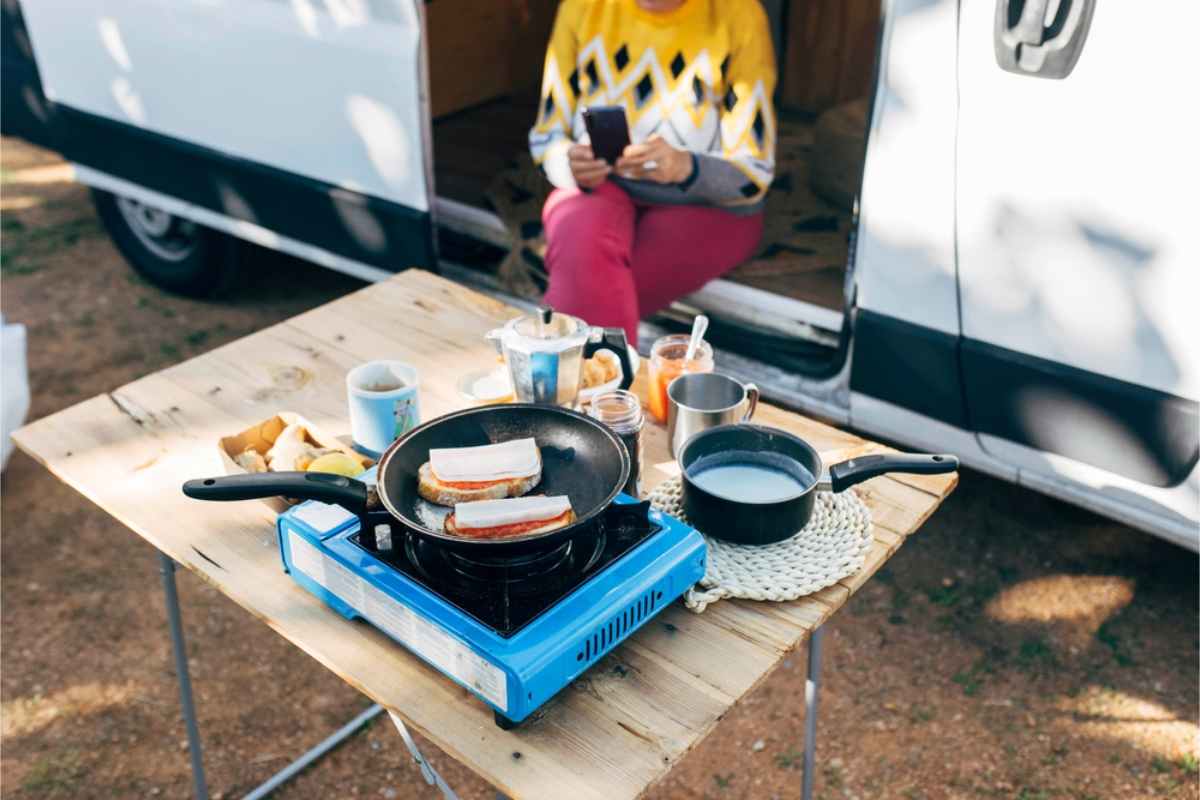
Essential Non-Refrigerated Foods to Pack for Iceland
Choosing the best non-perishable foods for camping will vastly depend on your preferences, but there are a few essentials to consider when you stop at a grocery store like Bónus, Krónan, or Nettó. The following are some foods to take camping that don’t need refrigeration so you can make delicious, nutritious meals on the go.
Proteins
Proteins are a great addition to your meals without refrigeration and can make excellent snacks, too. Canned fish, like tuna, can make for a light snack with crackers or spread on bread for a sandwich. It can also be mixed with pasta for a simple meal. Adding brown beans to your foods for camping with no refrigeration is also a great way to get some extra protein.
If you’re looking for a protein-rich snack to sustain you on hikes, jerky is a perfect choice. It’s easy to carry around and comes in various types, including beef, lamb, and fish. Choose your favorite or try something new.
Carbs
As you consider food to take camping without a fridge, don’t forget about the carbs to ensure you have plenty of energy for your sightseeing. Some of the most common ways to add some carbs to your camping meals with no cooler are instant rice, pasta, oats, and couscous. Mix these ingredients with vegetables and proteins to make a complete meal.
Crackers are another way to get some carbs, particularly as a snack while you are on the road or hiking in the wilderness. Add crackers, lunch meat, canned tuna, jam, or any other preferred topping for an energizing, flavorful snack.

Fruits & Veggies
If you want to make healthy camping food with no fridge, fruits and veggies are an absolute must. While fresh fruits and veggies are available in Iceland, if you want non-refrigerated foods that will last, dried, canned, and dehydrated options are the best choices. These options can be found in grocery stores, but prepare to spend a bit more than you may be used to.
Spreads, Sauces, & Condiments
Iceland is a land of sauces and condiments. Icelanders use them for just about everything and have special options for various local specialties. While some spreads, sauces, and condiments state they need refrigeration, you can often store them without a fridge or cooler for a period of time without worrying about spoilage.
Ketchup and mustard are standards, but you will find numerous other sauces common with Icelandic meals, including burger sauce, remoloude, pylsasinnep (hot dog mustard), garlic sauce, pita sauce, cocktail sauce, bernaise sauce, and more. Try a few, or try them all to find your favorites.
In addition, Icelanders generally use jams for breakfast and in other meals you may not expect, like lunchmeat sandwiches and even pizza. You can find great options in the grocery stores or at places where locals sell their goods.
Snacks and Energy Boosters
Along with easy food for camping with no fridge, you will need to think about snacks and energy boosters so you can keep going all day long. Prepackaged options are available in stores to give you a vast selection of both familiar snacks and new choices. Various energy bars and snack bars can be found, along with nuts, trail mixes, and other high-protein snacks.
| Food Category | Examples | Time Without Refrigeration |
|---|---|---|
| Proteins | Canned tuna, jerky, vacuum-sealed smoked salmon, hard cheese, boiled eggs (peeled) | 2–7 days depending on type (canned/jerky: up to weeks; boiled eggs: 2 days) |
| Carbs | Rice cakes, tortillas, dry pasta, couscous, bread, oats | 1–4 weeks (longer if sealed and dry) |
| Fruits & Vegetables | Carrots, apples, oranges, potatoes, onions, cherry tomatoes, bananas | 3–7 days (root veggies last longer; bananas ripen quickly) |
| Spreads | Peanut butter, jam, Nutella, tahini, honey | Up to 1 month (avoid direct sunlight) |
| Sauces & Condiments | Hot sauce, soy sauce, mustard, vinegar-based dressings, ketchup | 1 week to several months (many are shelf-stable after opening) |
Easy Meal Ideas for Iceland Campervan Trips (No Fridge Needed)
As you search for the best camping meals with no refrigeration and foods that travel well without refrigeration, you will find that Iceland is a great place to get what you need. As an island nation with a cold climate, fresh foods can be difficult to come by, at least in the past. This means many of Iceland’s specialties are made to be great dry camping food ideas.
Quick No-Fridge Breakfasts for Busy Mornings
When you wake up in the morning, you are probably ready to go and explore, but you shouldn’t forget to eat first. For breakfast, the best non-perishable meals for camping include a combination of oats, dried fruit, and nuts or traditional Icelandic rye bread spread with jam or nut butter. Adding cheese to the rye bread is another delicious choice to add dairy.
Easy Lunches to Refuel Mid-Hike
Non-perishable lunch ideas for camping are necessary to ensure you can make easy options to eat, whether you’re in the middle of a hike or resting between stops. Tuna salad wraps with crackers or quinoa bowls with canned beans and veggies can be prepared in the morning and eaten later. These make-ahead camping meals require no refrigeration and are easy to pack in your backpack.
Simple Dinners After a Long Drive
After a long day of hiking and driving, you don’t want to be left preparing complex camping meals with no cooler. Some of the best non-perishable foods for camping that you can make for your evening meal include couscous with lentils and canned veggies or pasta with tomato sauce and mushrooms. These ingredients are readily available and make good food for camping with no refrigeration.
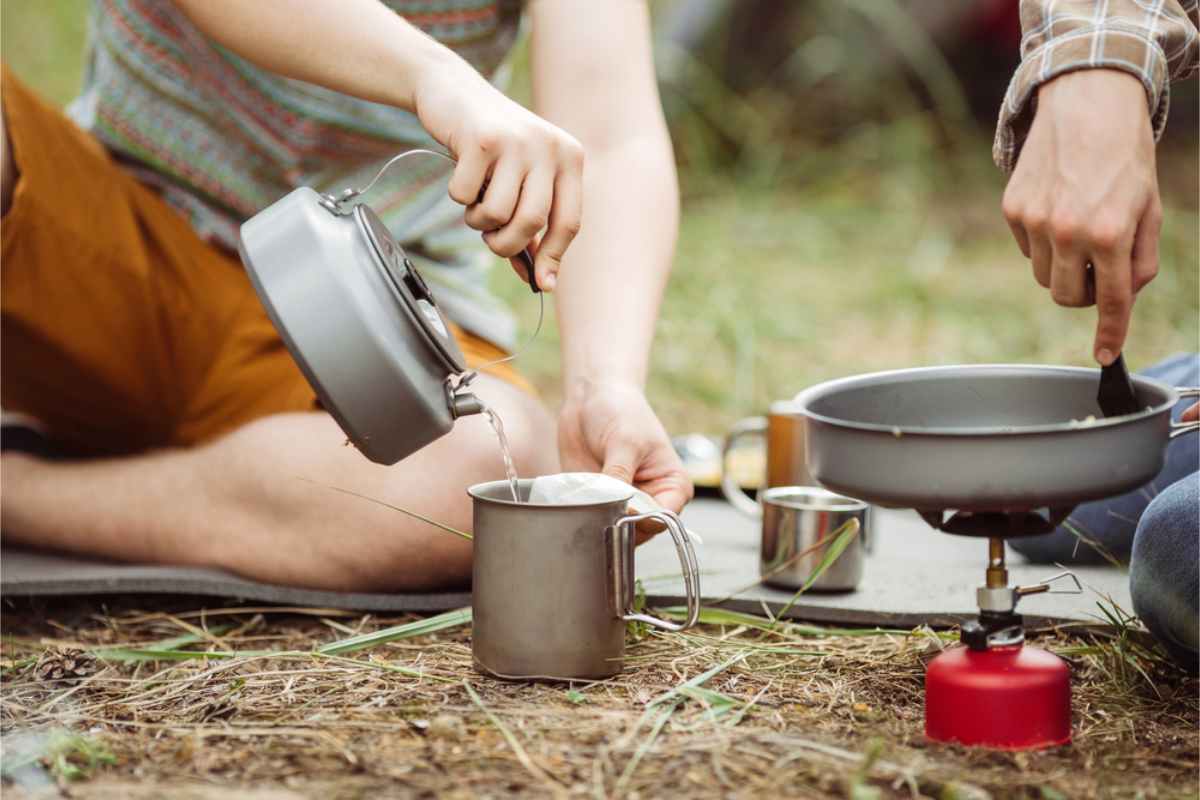
Snacks for Road Trips & Hikes
Meals without refrigeration aren’t your only concern when traveling in Iceland. You also need to find the best snacks for your road trips and hikes. These snacks are some of the best foods to bring camping with no cooler. Trail mix and jerky are popular options among visitors and locals. You may even find dried skyr snacks to give you extra calcium and energy.
Hot Drinks & Soups for Iceland’s Chilly Days
Even in summer, having some warm drink options is just as important as non-refrigerated meals. Instant coffee and tea are excellent choices to get your day started or provide a little energy boost in the middle of the day. If you want a quick snack or lunch idea, pick up some powdered soups to make with hot water you heat up in the campervan. All these options are perfect for warming up after a cold hike.
Icelandic Non-Refrigerated Foods You Should Try
While you likely already have your preferences for non-refrigerated foods, there are many Icelandic options you should definitely try. You may find that you have a new favorite. The following are some great camping food with no cooler required straight from Iceland.
Rúgbrauð
Rúgbrauð is a dense, somewhat sweet Icelandic rye bread that is commonly consumed with butter or cheese. Even if you aren’t a fan of rye bread, you may find the Icelandic version much more to your taste. It’s well worth buying a block of it to try before you decide whether you should buy more.
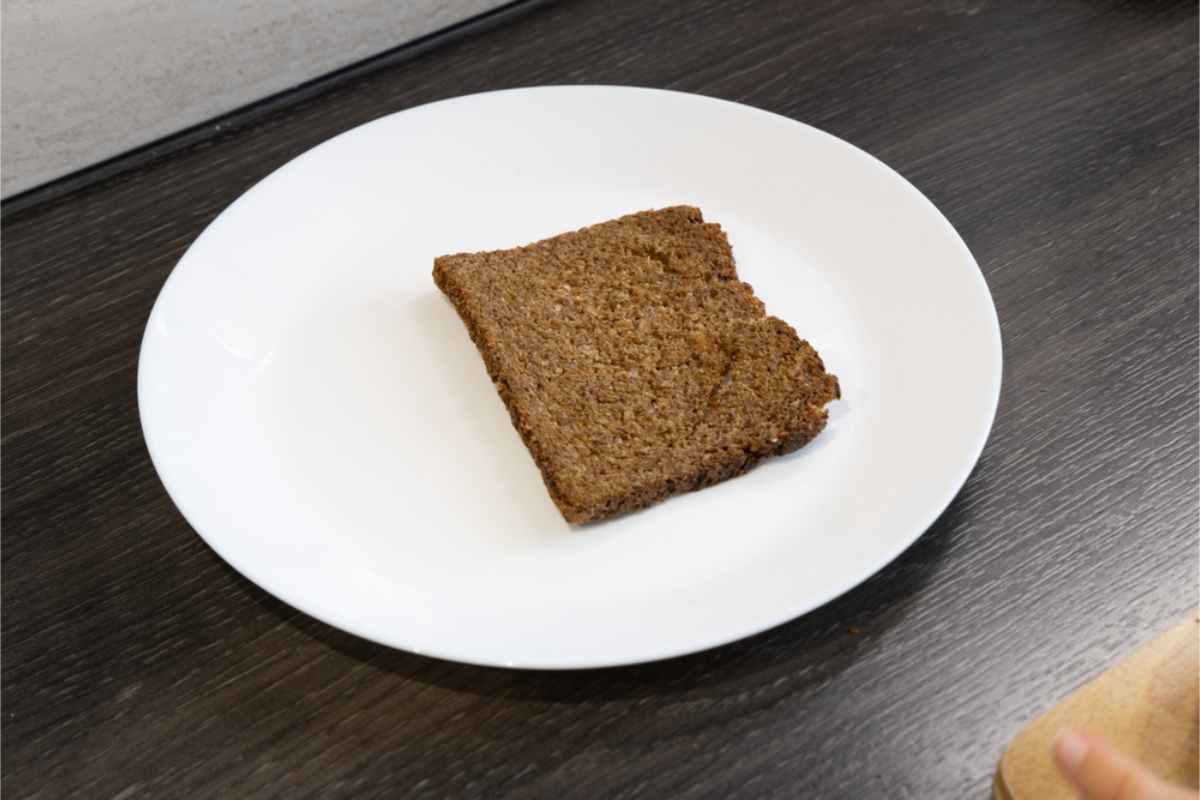
Harðfiskur
You’re likely familiar with beef jerky, but in Iceland, a popular alternative is harðfiskur. This dried fish jerky comes in several varieties, including haddock, cod, and flounder. Icelanders generally eat it with butter, but it can be eaten plain to give you some extra energy on your next hike. It’s well worth a try.
Local Jams and Preserved Spreads
Another favorite among Icelanders is home-made jams and preserved spreads. Many farmers and locals make these jams and preserves to serve with various bread items, making them a great option to take on the road with you. They are perfect as camping foods that don’t need refrigeration to make sandwiches or have a quick snack.
Shelf-Stable Icelandic Cheeses (Where Available)
In some parts of the country, you can find shelf-stable Icelandic cheeses to eat with your bread for breakfast or to make sandwiches for lunch or a quick dinner. Because they are shelf-stable, they are perfect food ideas for camping with no refrigeration. You’ll get all the benefits of cheese without worrying about how to keep it cold.
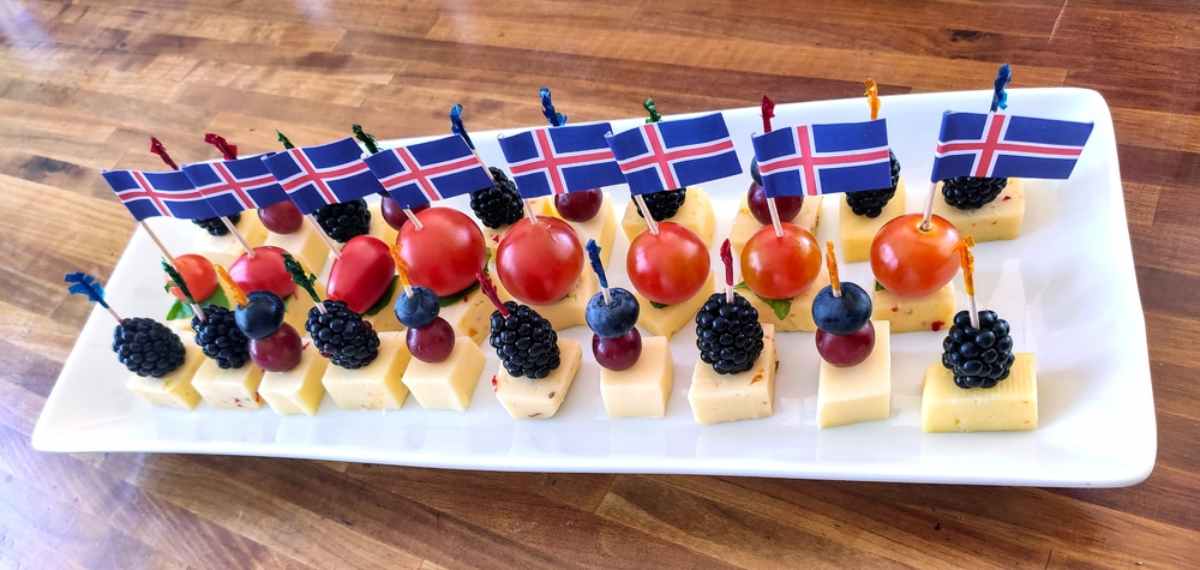
Cooking Without Refrigeration in a Campervan
Now that you know what food to take camping without a fridge, it’s time to consider the best non-refrigerated meals and how to cook well without having a way to keep your food cold. The following tips will help you find the best solutions to get delicious, nutritious meals without the benefit of having a full-size refrigerator at your disposal.
Recommended Cooking Gear for Iceland
Having the right gear is essential. A butane or propane camping stove is the ideal way to prepare your no-cooler camping meals. Having one with a windscreen is essential if you plan to cook outside due to the frequent winds in Iceland. Be sure to check which fuel you need and stock up. Fuel is generally available at gas stations.
Most campervans will be equipped with the cooking and eating utensils you will need for your trip. Review what is in your campervan and consider a stop at a local store to get anything you may need that isn’t included. You should also bring trash bags, a sponge or rag, and dish soap to clean up after your meals.
Cooking Inside vs. Outside (Weather Considerations)
When preparing camping meals that don’t need refrigeration, you have your choice to cook inside your campervan or outside. While you may prefer one or the other, the Icelandic weather conditions will likely dictate which you can do. If it’s cold, wet, or extremely windy, it may be best to cook inside the campervan, so be prepared with some meals that may not require the camping stove.

Safe Cooking & Water Use in Your Campervan
The good news is that when you’re traveling in Iceland, you don’t have to worry about carrying sufficient amounts of water with you. Every campground and just about everywhere else you may stop has access to safe, drinkable water you can use to top off water bottles or prepare to cook your non-refrigerated meals. The water in Iceland is among the safest and best in the world.
In addition to water, it’s vital to keep these safety tips in mind when cooking on your camping trip in Iceland:
- Always cook in a well-ventilated area and use a windscreen outside.
- Make sure your stove is on a stable surface.
- Don’t cook while the engine is running on your campervan.
- When cooking inside, open some windows or the roof vent to clear moisture and fumes.
- Use biodegradable soap to avoid contaminating the environment.
- Properly secure all cooking implements before driving around.
Sample 3-Day Non-Refrigerated Camper Meal Plan
The options for cooked foods that last a long time without refrigeration are numerous in Iceland. You won’t have to significantly limit your choices solely because you don’t have access to a full-size refrigerator or may not have a cooler. Here is a sample of a 3-day meal plan to get you started.
Day 1: Easy & Energizing Start
The first day can often be a more relaxed day as you recover from jet lag and get your bearings. It’s likely the day you will go grocery shopping and stock up on food for camping with no fridge. It’s best to choose easier foods for this day to make things a bit simpler.
For breakfast, prepare instant oats with dried fruit, chia seeds, and honey, along with your choice of instant coffee or tea to get you started on the right foot. When it’s time for lunch, make tortilla wraps with canned tuna, mayo packets, and dried herbs, along with carrot sticks, an apple, or dried fruit of your choice.
Once you are settled into your campground, cook instant couscous with sun-dried tomatoes, olives, and canned chickpeas. You can season this dish with olive oil, lemon juice, and other seasonings. Consider a delicious piece of Icelandic chocolate for dessert.
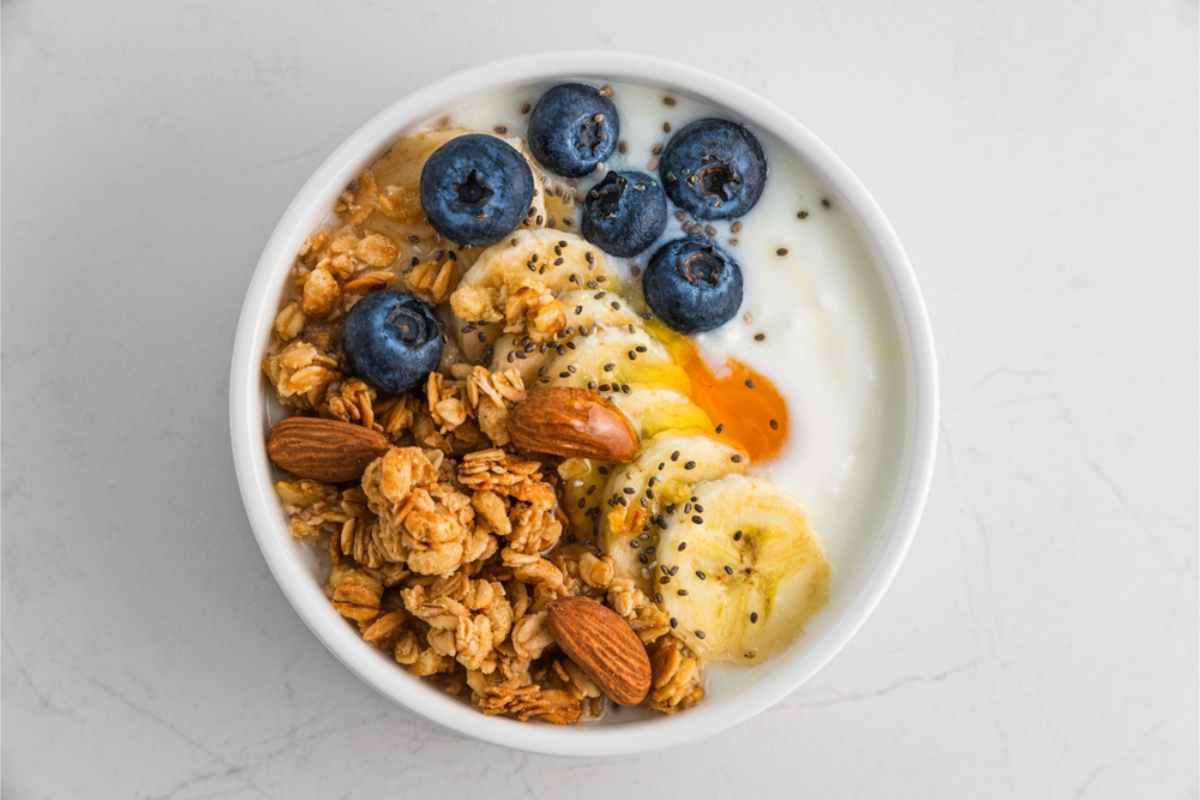
Day 2: Quick Meals for a Full Day of Sightseeing
As you prepare to hit the road and see the sights on day 2, prepare a breakfast of Muesli with powdered milk or oat milk powder and water. Add some fruit to give you a little extra boost. We recommend a banana or dried apricots, but any fruit you prefer will do the trick.
Since you will likely be visiting a lot of sights or taking a hike, a quick lunch is one of the best non-refrigerated meal ideas for this day. Crackers with shelf-stable cheese, jam, or peanut butter is a great option. Enjoy sliced cucumber or cherry tomatoes to go with it. If you want something a bit lighter and faster for on-the-go, an energy bar can be a good choice.
Finally, when it’s time to prepare your dinner in your campervan, heat up some water and prepare ramen or rice noodles. Add dehydrated veggies, soy sauce, and miso paste for a more authentic feel. You can also use instant soup packets to further flavor the broth. This is a great way to warm up after a long day out in the cold.
Day 3: Scenic Picnic with Icelandic Flavors
Treat yourself on day 3 with a breakfast of pancakes or flatbread. You can make them from an instant mix with water or purchase some prepackaged, shelf-stable pancakes or flatbread from the grocery store. Top them with jam or Nutella to add some extra flavor. Your favorite coffee or tea will complete this breakfast.
Either the night before or before you head out on the road, cook some pasta to make a cold pasta salad to enjoy later in the day. Add canned beans, pesto or olive oil, and dried herbs to the pasta for a delicious, refreshing salad. Enjoy it with Icelandic rye bread or another bread of your choice.
As you unwind with a cup of hot cocoa or herbal tea after your day of sightseeing, prepare lentil stew for your dinner. This stew is made with red lentils, spices, tomato paste, and water for a filling meal that hits all the right spots.
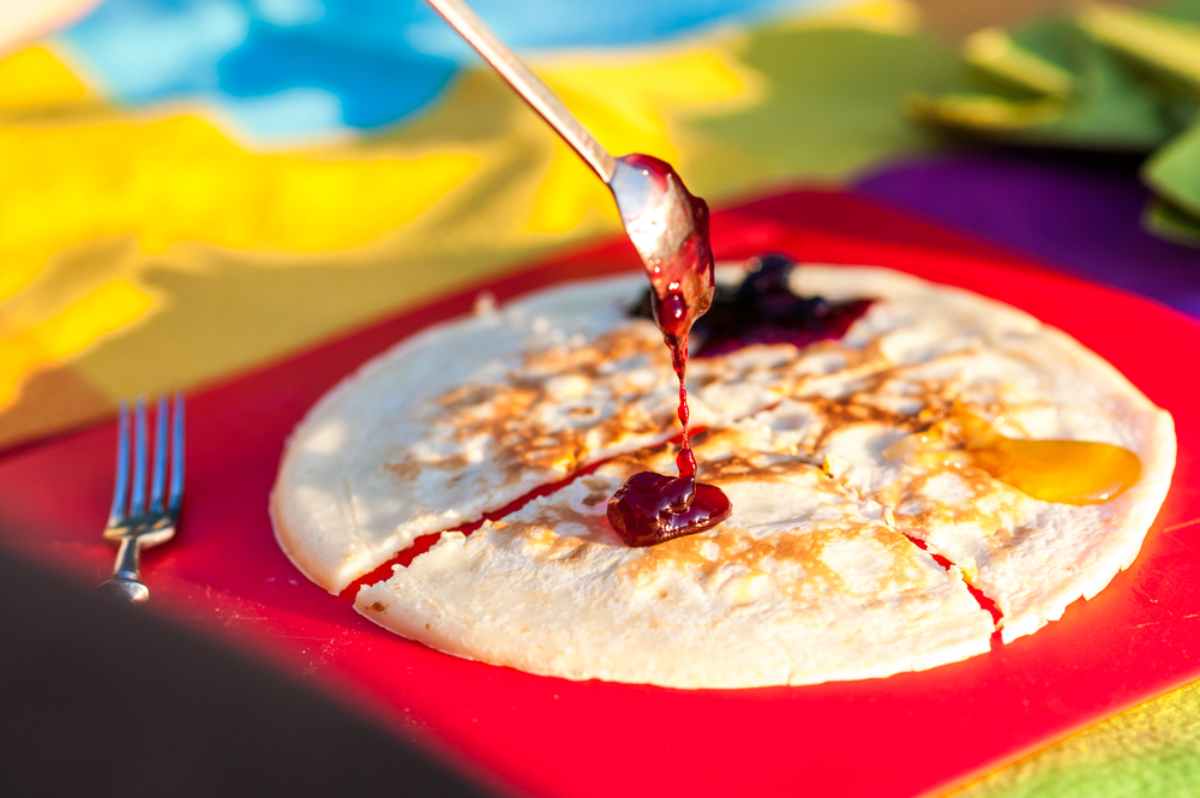
Pro Tips for Eating Well While Exploring Iceland
You don’t have to dine out for every meal to ensure you eat well while you’re exploring the beautiful countryside. In fact, your non-refrigerated meals can be just as fantastic as enjoying an expensive meal at a restaurant. These tips will help you feel fulfilled throughout your campervan journey.
How to Reduce Waste
The best way to reduce waste when preparing your non-refrigerated meals is to check out the sharing shelves at the rental company or campgrounds before you go shopping. You may find just what you need. If you’re still missing something, purchase shelf-stable items and leave any leftovers behind when you return home.
When preparing your meals, use anything perishable as early as possible. The faster you use your fresh foods, the less likely it is that you will need to throw anything away. Purchase reusable shopping bags and containers to use throughout your trip rather than relying on disposable options.
Finally, be sure you carry all your waste with you if the place you camp or stop at doesn’t have receptacles. Iceland has a good recycling system in place so be prepared to separate your trash.
Sustainable Packaging & Local Sourcing
Iceland is environmentally conscious, with excellent sustainable packaging. You won’t find a lot of disposable plastic with many common plastic items switching to paper, cardboard, or other more environmentally friendly materials. Reusable is the way to go if you can.
In addition to choosing sustainable packaging when purchasing your food and other items, source whatever you can from local farmers and other local resources. As a small island country in the middle of the ocean, much of the food is imported, but you can support the locals by purchasing from smaller markets whenever possible.
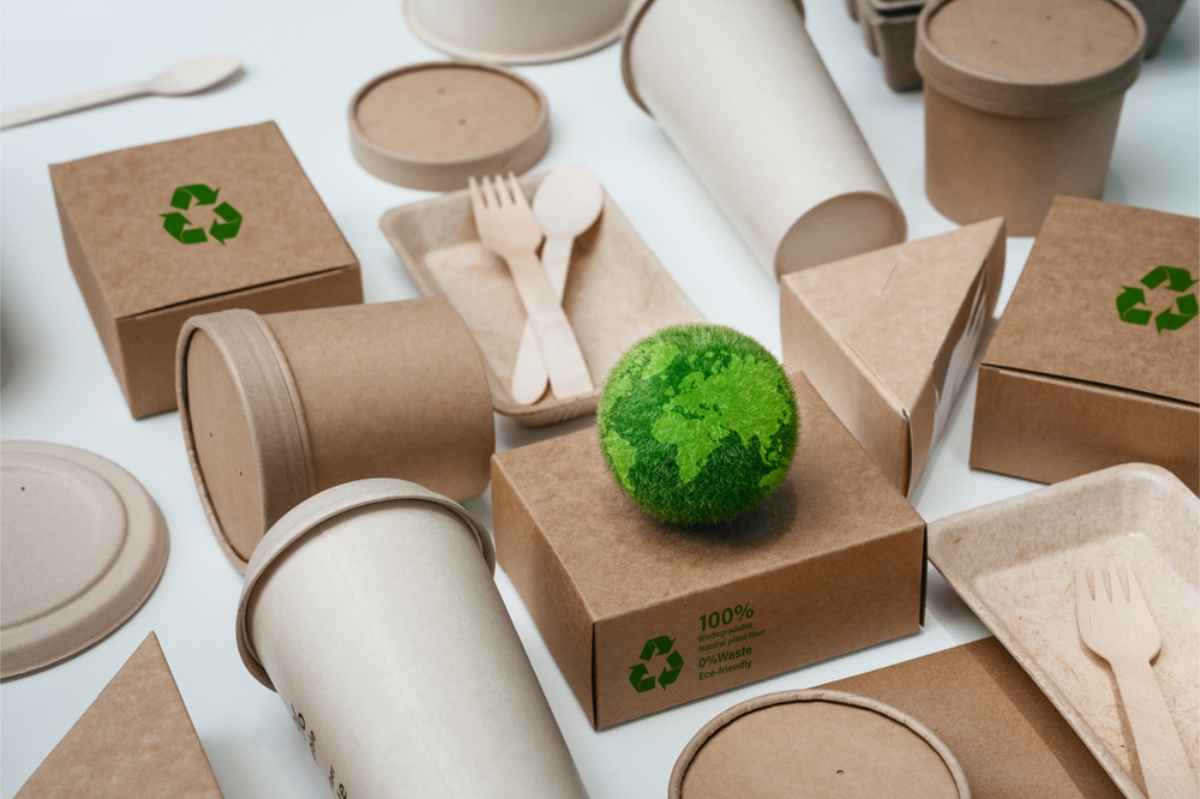
Staying Energized on Long Travel Days
Visiting Iceland, especially during the summer months, often means long days on the road, viewing numerous sights and taking short or long hikes through the wilderness. These long travel days require staying energized by eating well. Skipping meals or snacks can make you feel tired or can even cause mistakes that could be dangerous, especially when hiking.
For starters, eating small, nutritious meals and snacks throughout the day is more effective than eating only a few larger meals. Choose protein-rich snacks and complex carbs to last longer. Stock up on fruit that travels well and doesn’t require refrigeration, like apples, bananas, and oranges.
Stay well-hydrated throughout the trip. Top off your water bottle at every stop. The tap water in Iceland is safe and delicious. Consider bringing along a thermos for your hot drinks, but don’t overdo the caffeine.
Eat Well & Travel Smart Without a Fridge in Iceland
Just because you won’t have a refrigerator on your campervan adventure doesn’t mean you can’t eat well. With careful planning, you can make the best non-refrigerated meals when you rent a campervan in Iceland. Although you will still want to eat out once in a while, being prepared with refrigeration-free meals is the way to go as you camp your way around the country.


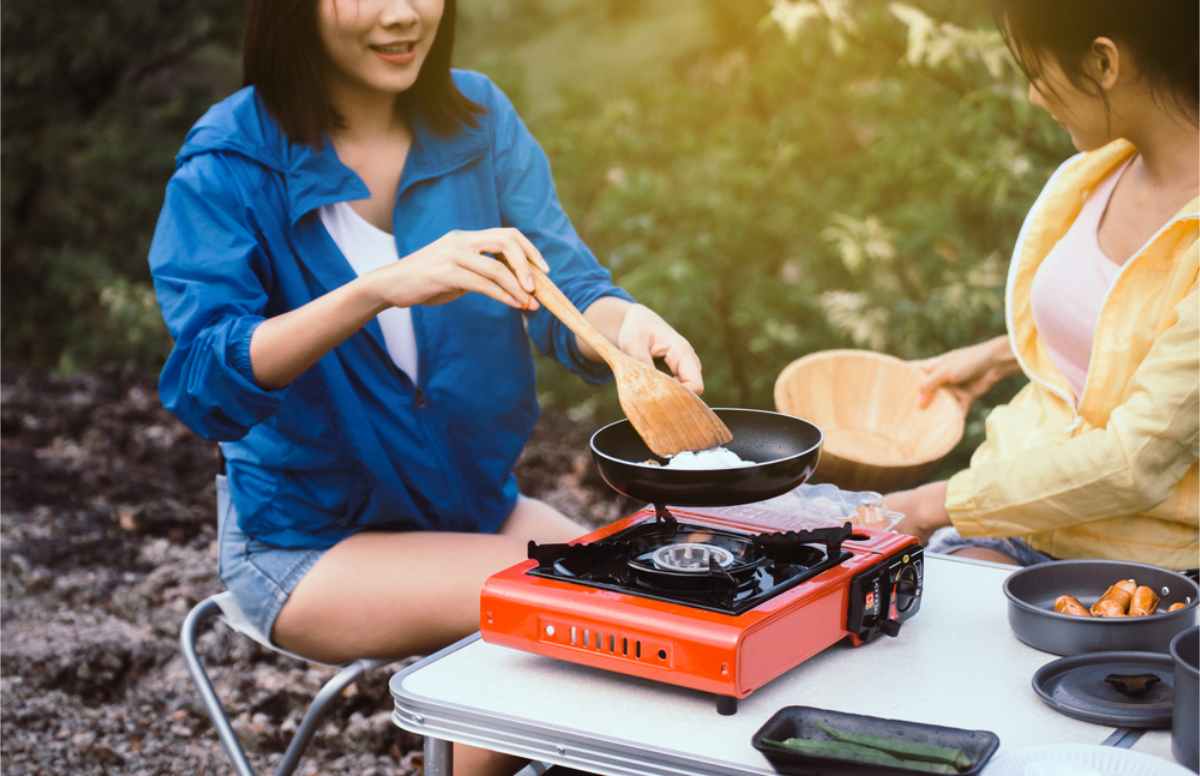
 By
By 
